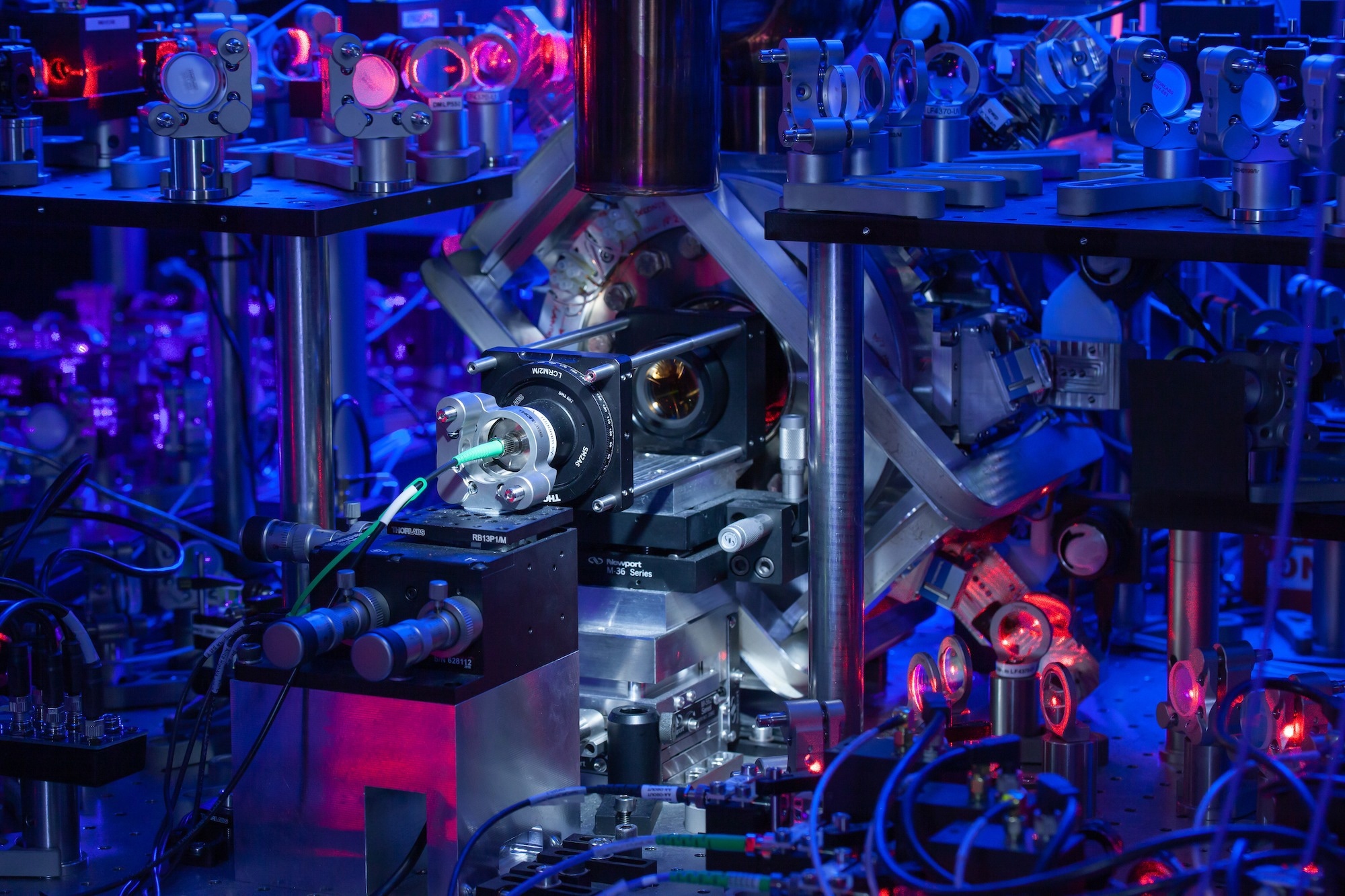Research published this week in Nature explains how an international team of researchers from the United Kingdom, Switzerland, and France have, for the first time, experimentally implemented a type of quantum cryptography considered to be the "ultimate,” “bug-proof” means of communication.
 One of the two ion traps used, seen in the centre of the image. Around the trap run a number of laser beam lines for the preparation and manipulation of the ions. At the front of the trap, the end of the quantum network link to the other trap — an optical fibre — is visible. Image Credit: David Nadlinger/ University of Oxford
One of the two ion traps used, seen in the centre of the image. Around the trap run a number of laser beam lines for the preparation and manipulation of the ions. At the front of the trap, the end of the quantum network link to the other trap — an optical fibre — is visible. Image Credit: David Nadlinger/ University of Oxford
Existing implementations of “quantum key distribution” (QKD) rely on communicating between ‘trusted’ quantum devices (and thus offers the potential for quantum hacking). The newly demonstrated approach allows secure communication between devices without needing to know much about them. This important breakthrough paves the way for secure cryptography for real-world devices, and for further quantum information applications based on a principle of device-independence.
Quantum Cryptography’s Bid for Greater Security
Currently, secure cryptographic communication relies on the inability of traditional computers to calculate the prime factors of large numbers. However, as technology advances, future quantum computers will be able to easily solve these problems, rendering current cryptographic protocols obsolete.
In an experiment built upon three decades of fundamental research, experimental work at the University of Oxford – with theoretical contributions from ETH Zurich, EPFL, the University of Geneva in Switzerland, and the French Alternative Energies and Atomic Energy Commission (CEA) – demonstrated a complete quantum key distribution protocol immune to the vulnerabilities and defects of physical devices that plague current quantum protocols. The experiment proves a much stronger form of security than is currently attainable using classical computers.
Professor David Lucas from the University of Oxford explains, "The real breakthrough here is that we were not just able to show that our quantum network had theoretically good enough performance to do this new kind of QKD, but that we were actually able to do it in practice and get all the way to distributing a shared secret key. Although originally designed for experiments in quantum computing, this shows the versatility of quantum networking for other applications."
Guaranteed Device Independence
The multi-disciplinary research team, consisting of theoretical and applied physicists and computer scientists, achieved the successful experiment based on “high-quality quantum entanglement” or, in layperson terms, an exclusive relationship between two particles that can span vast distances (even light-years) in space, but still operate in tandem. Such connections offer broader security and privacy guarantees for communication and financial transactions without third-party interference.
Previous work on QKD already removed the assumption of limited computational power, but required the communicating parties to trust their quantum devices instead. The quantum key distribution demonstrated in this new research however, can guarantee privacy with only a few general assumptions about the physical apparatus used. The foundation for this ‘device-independent’ scheme relies on the validity of quantum theory, and can be certified by measurement statistics observed during the experiment.
“Ninety years ago, we thought nature couldn't possibly behave in such a curious way; sixty years ago, we figured out how to show that it does after all; thirty years ago, we discovered a way to exploit this our advantage” explains David Nadlinger, the lead author of the Nature paper, “and now, we can finally put these insights about the fundamental fabric of reality to practical use in securing communication.”
The Importance of Collaboration
As well as working with international partners, the University of Oxford leads the Quantum Computing and Simulation (QCS) Hub, a collaboration between 17 UK universities which is part of a national programme focused on driving forward quantum technologies in the UK. Talking about the breakthrough Professor Lucas explains "It's only been made possible because of sustained investment from the UK's National Quantum Technology Programme, via the NQIT and QCS Hubs – it requires many years of development to achieve the level of technical sophistication needed for these experiments."